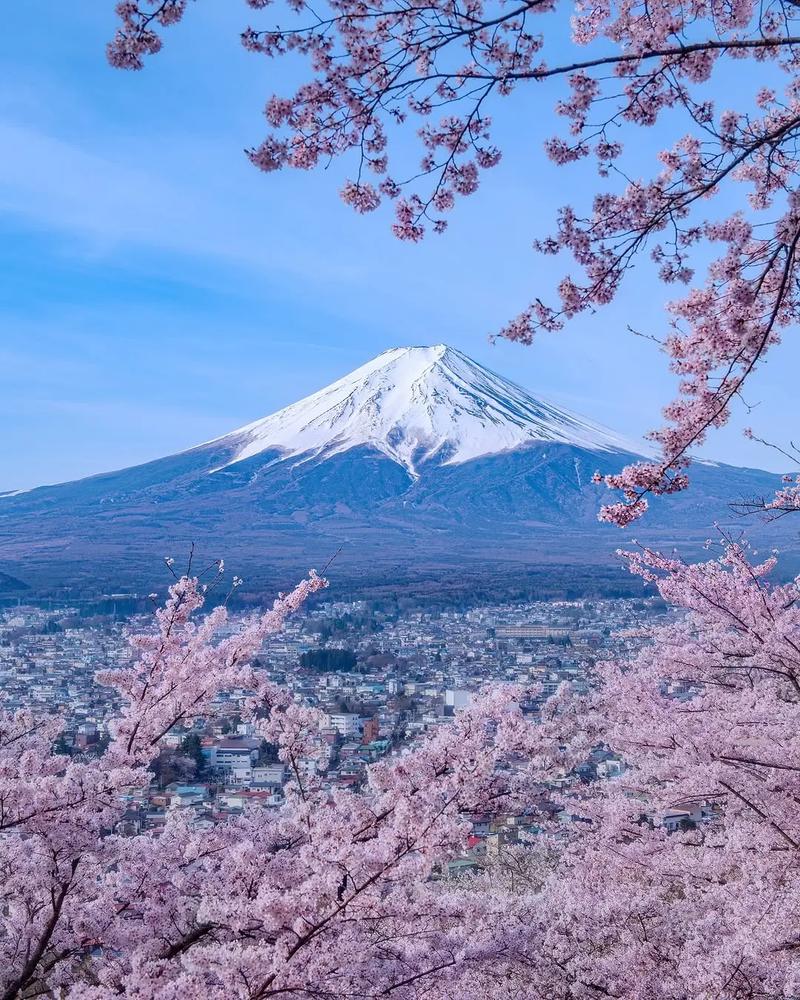Conquering Mount Fuji: Your Ultimate Guide to Japan’s Sacred Volcano
More Than a Mountain: An Introduction to Fuji-san
For centuries, Mount Fuji has been more than just a peak on the horizon; it’s a national symbol, a spiritual site, and a bucket-list destination for travelers worldwide. My journey to see this iconic volcano was a quest to understand its powerful draw, from the serene viewing points at its base to the challenging ascent to its summit. This is your ultimate guide to experiencing the majesty of Mount Fuji.
Part 1: The Perfect View – Where to See Mount Fuji’s Majesty
You don’t have to be a climber to appreciate Fuji’s grandeur. Some of the best experiences come from simply witnessing its perfect symmetry against the sky.
-
The Five Lakes Region (Fuji Five Lakes): Lake Kawaguchiko is the most accessible and popular spot. For a picture-perfect reflection of the mountain on the water, head to the northern shores. For an iconic view that you’ve likely seen on postcards, take a short trip to Chureito Pagoda. The five-story pagoda with Mount Fuji in the background is absolutely breathtaking, especially during the cherry blossom season in spring.
-
Hakone: Famous for its hot springs (onsen) and the iconic Hakone Ropeway, this area offers dynamic views. From the cable car, you can see the volcanic valleys of Owakudani with Fuji as a dramatic backdrop. Don’t miss the chance to ride a pirate ship on Lake Ashi for another unique perspective.
-
Pro Tip: Check the weather and cloud forecast! Visibility is best in the early morning and during the colder months (late autumn to early spring). The mountain is often shy and hides behind clouds in the afternoon and during summer’s rainy season.
Part 2: The Ultimate Challenge – Climbing Mount Fuji
For the adventurous, climbing Mount Fuji is a rite of passage. The official climbing season is short, from early July to early September.
-
Choosing Your Trail: The Yoshida Trail is the most popular and beginner-friendly, starting from the Fuji Subaru Line 5th Station. It’s well-developed with numerous mountain huts.
-
The Sunrise Summit (Goraikō): Most climbers opt for a “bullet climb” or stay in a mountain hut to reach the summit just before sunrise. Watching the first rays of sun illuminate the clouds from above is a spiritual, once-in-a-lifetime experience.
-
Pro Tip: “Climb Mount Fuji once; a wise man climbs it twice.” The first time is for the challenge, the second is for the appreciation. Be prepared for altitude sickness, rapidly changing weather, and strenuous switchbacks. Pack layers, water, headlamps, and cash for huts and facilities.
Part 3: Beyond the Summit – Cultural and Onsen Relaxation
The Fuji region is rich in culture. After the physical exertion of hiking or sightseeing, there’s no better way to recover than in a traditional onsen (hot spring). Towns like Lake Yamanakako and Hakone offer numerous baths, many with stunning views of the mountain.
Visit the Fujisan Hongū Sengen Taisha Shrine in Fujinomiya to understand the mountain’s deep spiritual significance as a sacred site in the Shinto religion.
Crafting Your Perfect Fuji Itinerary
-
Day Trip from Tokyo: Perfect for a quick view. Take an express bus to Kawaguchiko, visit the pagoda, and enjoy the lakeside.
-
Weekend Getaway: Spend a night in Hakone or at a Kawaguchiko ryokan (traditional inn). Enjoy the onsen, explore the lakes, and take your time with the views.
-
The Climber’s Pilgrimage: Dedicate 2-3 days for the climb, including travel, acclimatization, and a well-deserved rest in an onsen afterward.
Conclusion: A Symbol That Stays With You
Whether you see its peak from a serene lake, a bustling town, or from your own two feet at 3,776 meters, Mount Fuji leaves a lasting impression. It’s a testament to nature’s power and beauty, deeply woven into the cultural fabric of Japan. With careful planning and a sense of adventure, your trip to Mount Fuji will be an unforgettable chapter in your travel story.

